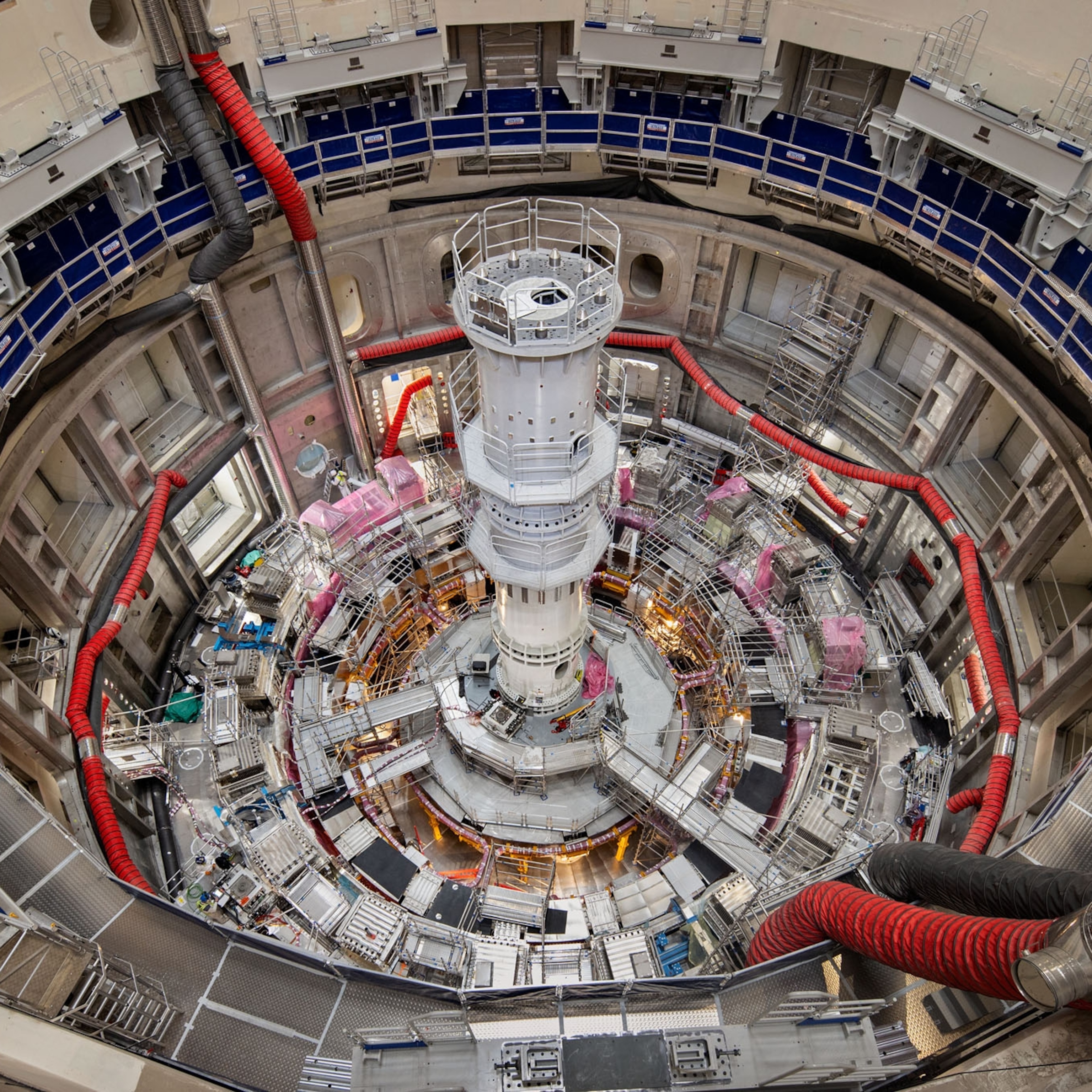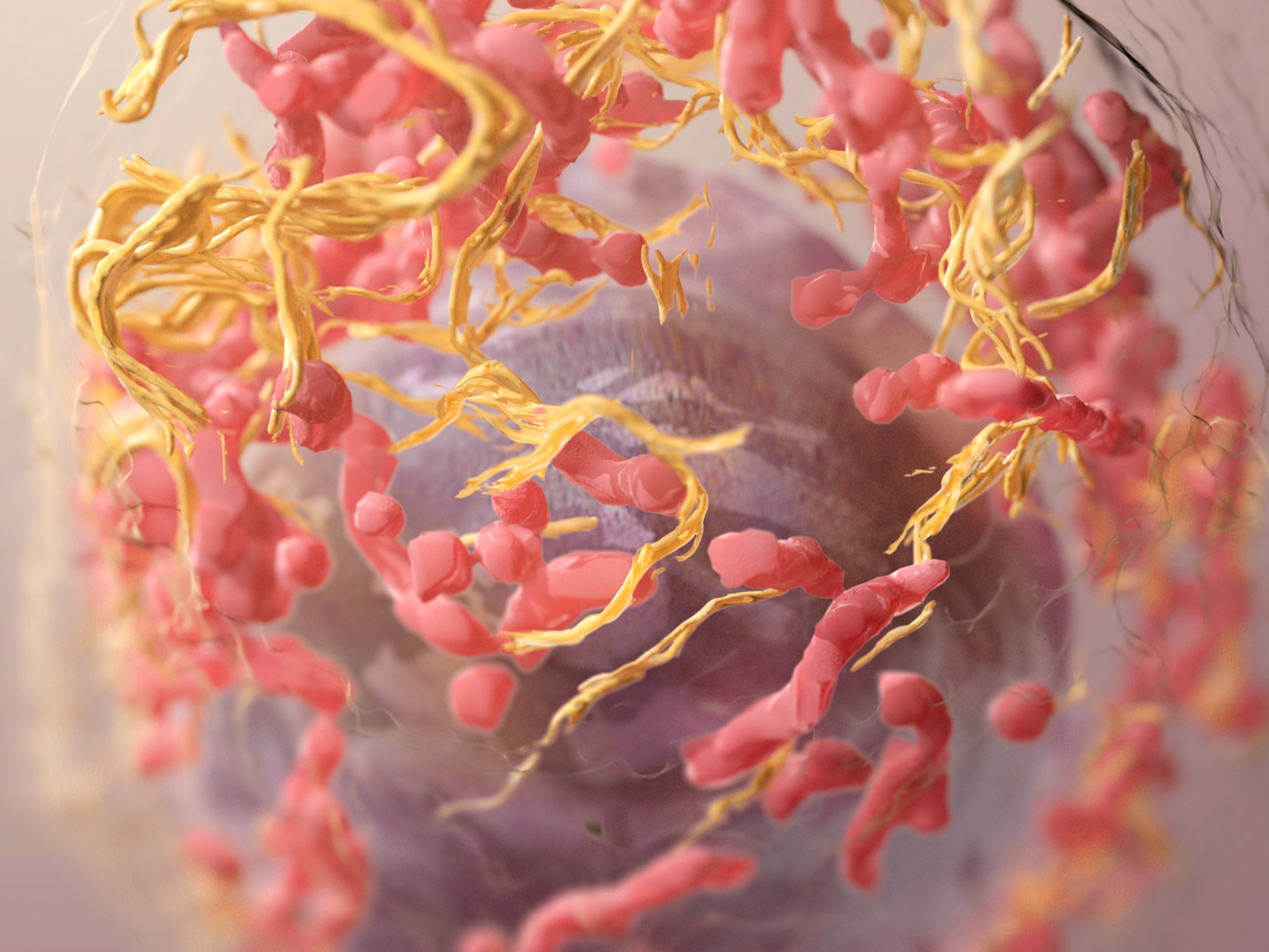
How do you kill hard-to-reach tumors? Particle physics is on the case.
High-energy electron beams may be able to kill tumors 10 times deeper than current treatments can—without damaging vital organs.
CERN, a center for physics research outside Geneva, Switzerland, is best known for discovering some of the building blocks of our universe. But scientists there are also studying new ways to treat cancer. While current radiation therapies use beams of protons, charged particles called ions, or photons of light to kill cancerous cells, another particle may be better suited to targeting tumors deep inside the body: the electron.
In a recent study, a team of physicists revealed that very high-energy electron (VHEE) beams could reach tumors 10 times deeper than current treatments and with such precision that doctors may be able to target cancers near vital organs without damaging surrounding tissues.
Research at CLEAR (CERN’s Linear Electron Accelerator for Research), which houses a 130-foot particle accelerator, found that electron beams with high energies focused with magnetic lenses could travel deep into a “water phantom”—a large pail of water used for radiation studies—without scattering. The phantom is considered a suitable substitute for a human because the body has a high water content. The experiment may pave the way for future, smaller linear accelerators—the type of particle accelerator used to generate VHEE beams—to be installed in medical facilities.

The findings were “a big step towards a very simple idea,” says Dino Jaroszynski, a physicist at the University of Strathclyde who co-authored the research. “The main advantage of our method is that we can concentrate the dose into a small region. And that's not done anywhere else.”
The crucial next step for CLEAR, which does not carry out human trials, is to adapt the method for use at hospitals where the treatment can be studied on patients. Thanks to a multimillion-dollar program at Lausanne University Hospital, which is about 40 miles from CERN, clinical trials are scheduled to begin in 2025. CERN and the Lausanne hospital recently announced a partnership with a firm called THERYQ that will manufacture linear accelerators for the trials close in size to MRI scanners.
The plan is to deliver VHEE beams to deep tumors in a fraction of a second using a technique developed in 2014 known as FLASH. “If you compress all the doses of delivery in one single treatment and within less than one second, you retain the same effect on the tumor,” says Roberto Corsini, a senior scientist at CERN.
Using this approach with VHEE could bring about a “therapeutic revolution” in cancer care by allowing a radiotherapy program, typically administered over multiple sessions, to be delivered in one quick hit, Corsini says. The method could also target “tumors that now cannot be treated by radiotherapy because they are too close to a sensitive organ or are radio-resistant so you would need to increase the dose to a level that then would be detrimental to the other tissue.”
Cancer research at a physics lab
The low thrum of vents and water pumps fills the windowless CLEAR facility, where the machinery of the linear accelerator sits on thick metal legs painted yellow. Research at CLEAR began in 2017, and today about a quarter of the work there investigates ways that electron beams could be used to treat medical conditions. While low-energy electron beams have been used to kill cancerous cells in superficial lesions, or damaged tissues near the surface of the body, beams with 5 to 20 times more energy could provide a lifeline for patients with tumors lurking up to eight inches beneath the skin.
Cancer kills some 10 million people a year. About two million will be diagnosed with cancer in the United States this year, and around half that number will receive radiotherapy. One third of cancers are resistant to conventional radiation and also chemotherapy drugs, which aren’t able to target individual tumors.
Current particle-based treatments come in several forms tailored to the nature of the cancerous cells. They include proton therapy, a precise treatment used to target cancers in parts of the body where damaging healthy tissue could seriously harm the patient, such as in the brain and neck. Ion therapy uses beams of charged particles in high doses against treatment-resistant tumors, such as those in the throat, pancreas, or liver. Photon beam treatments, meanwhile, emit radiation similar to that released during an x-ray, which is an effective way to kill cancer cells but comes with the risk of collateral damage.
Some research has focused on whether deep-seated tumors could be treated with a combination of FLASH and proton therapy, but the machines to deliver VHEE are “anticipated to be much more compact and less costly,” says Jean Bourhis, an oncologist at Lausanne University Hospital who is leading the human trial.
Despite the promising research, “a lot more work needs to be done,” Jaroszynski says. The development of a new type of radiotherapy “requires years and years and years of trials just to prove that it works on the one hand, and also that it doesn't have any adverse side effects.” Researchers also have “many unanswered questions” about VHEE treatments, such as the most effective angle of the beam and dose of radiation. Once more analysis has been done, “we can optimize much better the parameters of the beam in order to really target and maximize the effect and the benefits.”
Still, scientists are optimistic that a new era of cancer treatment is on the horizon. For researchers at CERN—where a particle called the Higgs boson that interacts with other particles to create mass was famously discovered—it’s a new, exciting type of physics.
“Higgs boson is one thing,” says Mike Lamont, director for accelerators and technology at CERN. “Human beings are another. And this is something we are very happy to be a part of.”








